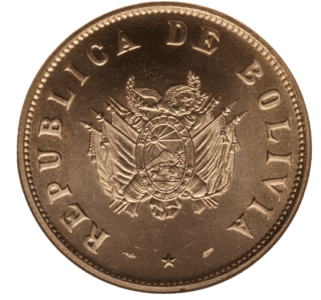 Amid global monetary turbulence—where digital platforms, fiat debt, and derivative markets drift ever further from tangible value—Bolivia is making a move rooted in sovereignty. Instead of exporting gold, as most resource-based economies are conditioned to do, Bolivia has begun to accumulate it. In 2025, the newly created state-owned company Epcoro, established under the Central Bank’s resource reform, announced its plan to acquire up to $1 billion USD worth of gold. This is not a budgetary adjustment. It is a declaration.
Amid global monetary turbulence—where digital platforms, fiat debt, and derivative markets drift ever further from tangible value—Bolivia is making a move rooted in sovereignty. Instead of exporting gold, as most resource-based economies are conditioned to do, Bolivia has begun to accumulate it. In 2025, the newly created state-owned company Epcoro, established under the Central Bank’s resource reform, announced its plan to acquire up to $1 billion USD worth of gold. This is not a budgetary adjustment. It is a declaration.
This policy marks a structural shift: gold is no longer seen as a commodity but as a foundation for domestic monetary resilience. Bolivia is constructing a model of autonomous reserves—one deliberately positioned outside dollar dependency. This approach challenges the conventional logic that drives developing economies to extract metals only to ship them to London or Shanghai. Bolivia is now among the first countries in the 21st century to treat gold not as an export asset, but as a sovereign anchor for its monetary architecture.
At the same time, the Carangas project, led by Canadian company New Pacific Metals, is advancing. This high-potential silver and gold deposit in western Bolivia will be the first major operation under a new AMC framework—an administrative model incorporating structured engagement with local communities. In 2025, the company initiated formal consultations with indigenous groups, signaling a transition toward legitimate, negotiated resource development rather than externally imposed extraction.
Analysts at Bloomberg, S&P Global, and Resource World have noted that Bolivia is intentionally avoiding the global gold exchanges. Instead, it is building a national system to purchase gold from small-scale producers at a stable and fair price, regardless of international spot volatility. This policy helps stabilize income in sectors long at the mercy of commodity indices and allows for the creation of an internal accumulation network anchored at the state level.
This is not economics as usual. It is a challenge to the global financial order in which smaller nations are expected to sell their gold to those who print the currencies. Bolivia, in 2025, is articulating a different paradigm: gold is not for export but for sovereignty. Not an outflow, but a reserve. Not conversion, but the foundation of a new form of asset-backed stability.
If a country like Bolivia—one of the poorest in its region—dares to rebuild its reserves on tangible value, that is a signal. Not just for Latin America. For the world.
